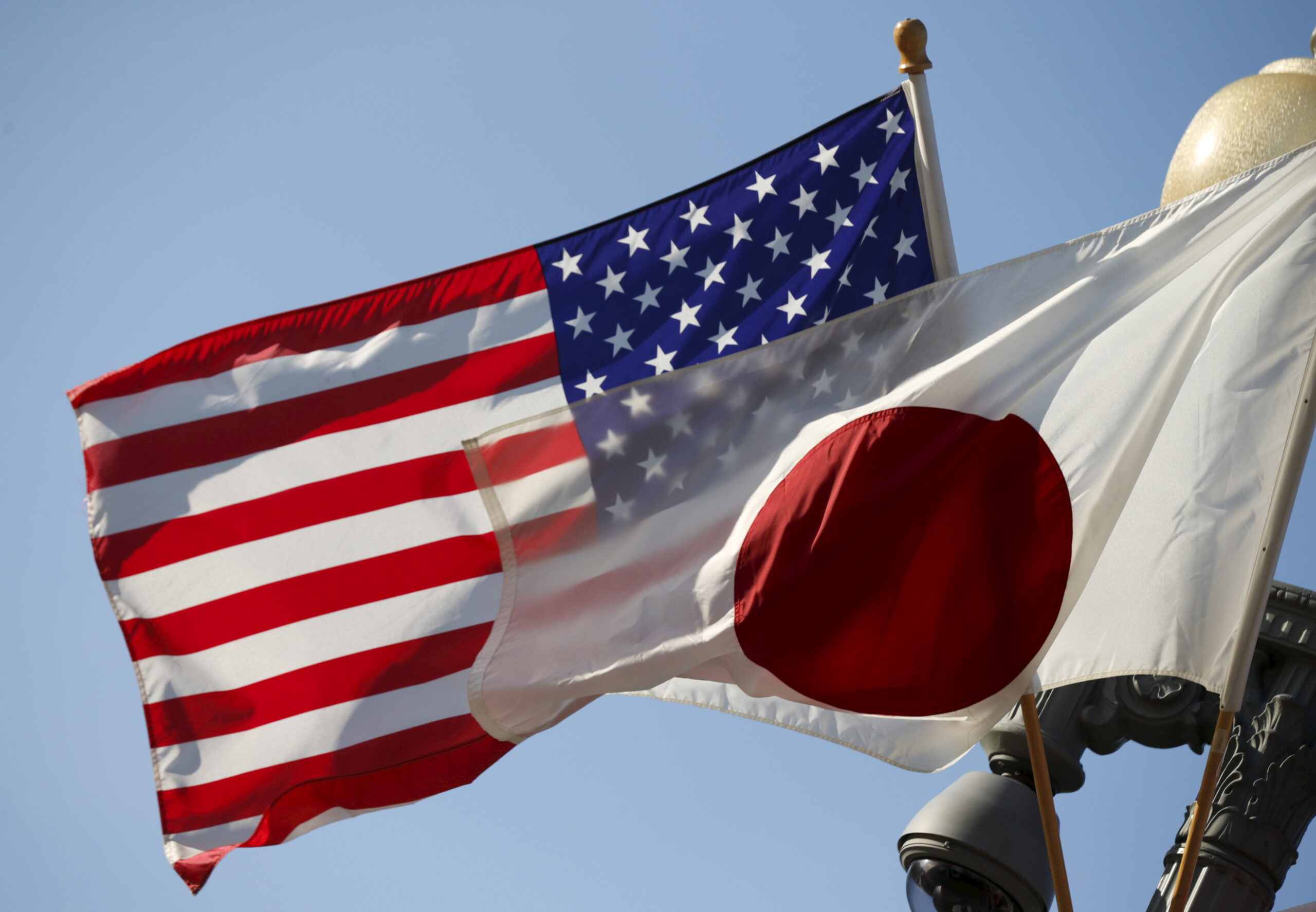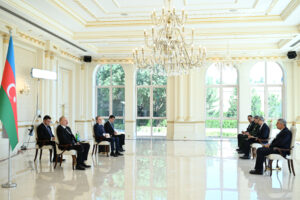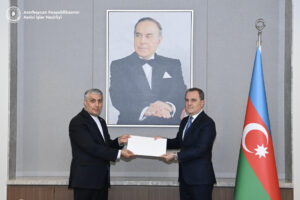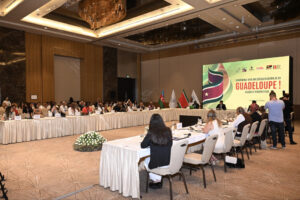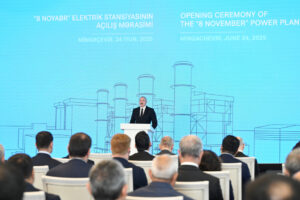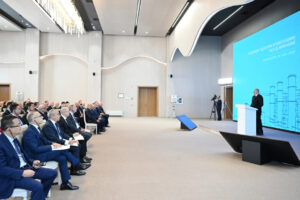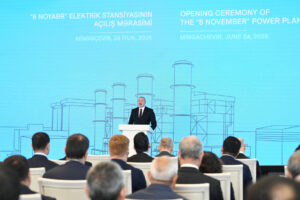Tokyo, 15 July, /AJMEDIA/
Japan is enhancing cooperation with the United States and Europe in developing floating offshore wind power amid concerns over potential overreliance on China for renewable energy supply chains, having set up an industry platform aimed at commercializing the nascent technology.
In June in Tokyo, officials from leading countries and regions in offshore wind energy, including the United States, Britain, Denmark and Norway, attended an international forum hosted by Japan’s Floating Offshore Wind Technology Research Association in a show of support for the organization.
“Let’s work on floating offshore wind together to overcome climate change and energy security issues,” British Ambassador to Japan Julia Longbottom, whose country boasts the world’s second-largest offshore wind market, said at the event.
As part of efforts to achieve a carbon-neutral society by 2050, Japan is exploring the huge potential of wind energy generated by floating turbines that can be installed in deep seas, taking advantage of the country’s exclusive economic zone, the world’s sixth largest.
Turbines assembled on fixed foundations in shallow waters are more common, less costly and easier to maintain. However, Japan has limited seabeds suitable for this type of offshore wind power and relies heavily on overseas manufacturers for wind blades and other components.
The industry platform, called FLOWRA, was launched in March and joined by major Japanese utility companies and the wind power units of trading firms to work on cost reduction and develop mass production technology, deemed as key to realizing large-scale commercialization.
The Japanese government hopes the organization will serve as “a hub” for close collaboration among like-minded partners to expand the global floating offshore wind market and develop international standards for the technology, Industry Minister Ken Saito said in a video message streamed at the forum.
Japan has already agreed with Britain to cooperate in deploying clean energy technologies, including offshore wind, and signed an agreement with Denmark in October for knowledge-sharing and research regarding floating offshore wind energy.
Japan also became the first international partner of the United States in an initiative aiming to reduce the cost of floating offshore wind by more than 70 percent, to $45 per megawatt-hour, by 2035 for deep water sites far from shore.
U.S. Ambassador to Japan Rahm Emanuel pointed out at the forum that since Japan’s deep coastal waters are similar to the environment off California, the two countries can work together on shared challenges.
Japan, for its part, hopes to leverage its experience in shipbuilding and metal processing to build floating platforms and mooring systems, FLOWRA said.
The expanding cooperation among Western countries in offshore wind energy comes as China took over the top spot from Britain in total offshore wind installations in 2021, further consolidating its global market share over the past two years, according to a 2024 report by the Global Wind Energy Council.
The European Union has expressed concerns about Chinese turbine manufacturers winning orders in the region by offering cheaper turbines, warning of China’s strategy to dominate the solar panel industry by exporting what has been deemed excess capacity at low prices.
The Japanese consortium, comprising 18 companies, including NTT Anode Energy Corp and major oil company INPEX Corp, aims to implement floating offshore wind power generation by fiscal 2030.

